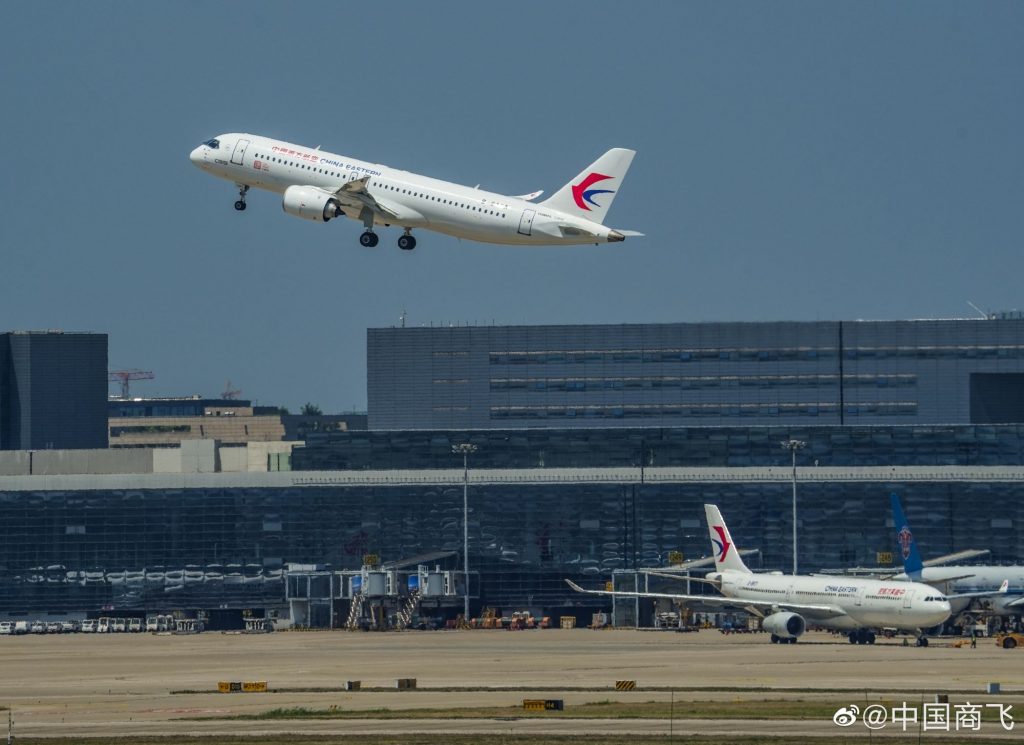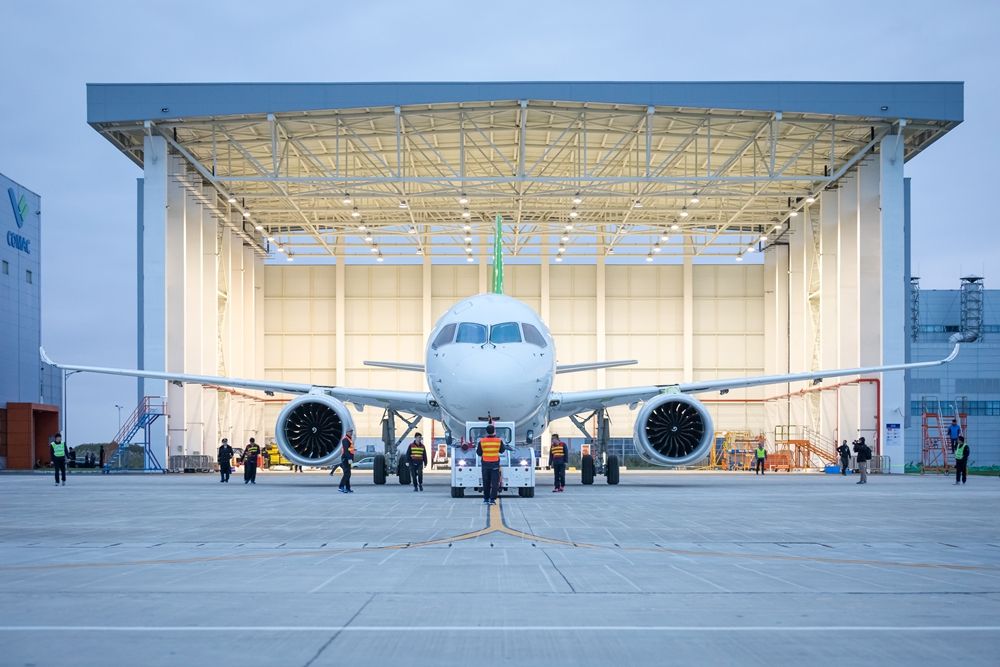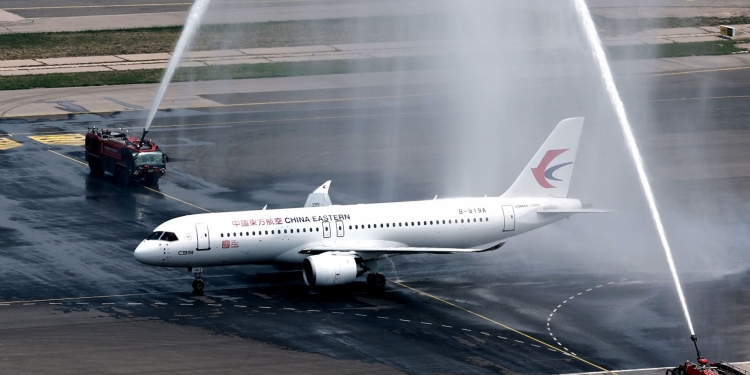The COMAC C919 aircraft, which is China’s first locally produced passenger jet has finally entered commercial service. Its first customer, China Eastern Airlines, has flown the C919’s inaugural flight on 28th May 2023 on flight MU9191 from Shanghai to Beijing with 130 passengers on board.

The C919 aircraft bearing the registration B-919A took off from Shanghai at 10:33am yesterday and it arrived in Beijing at 12:31pm. Before the first commercial flight, the Shanghai-based airline conducted over100 hours of aircraft verification test flights. China Eastern ordered a total of five C919 from COMAC in March 2021 and received their first aircraft in December 2022. The remaining four are expected to be delivered by the end of 2023.
The C919, #China's self-developed large passenger #aircraft, completed its first commercial flight from Shanghai to Beijing and was greeted with a water salute after touching down at Beijing Capital International Airport, marking its official entry into the civil aviation market. pic.twitter.com/axP3naY9Fb
— Beijing Daily (@DailyBeijing) May 28, 2023
The C919 is a single-aisle twin-jet aircraft which competes with the likes of the Boeing 737 and Airbus 320 family. Chinese narrowbody jet has a seating capacity of up to 192 passengers and it has a flying range between 4,075 to 5,555 kilometres. As of January 2023, it was reported that COMAC has received 1,200 orders for the C919.

Despite being made in China, the C919 like other aircraft rely on global supplies for its components which include its engines and avionics. It uses CFM International’s Leap-1C engines which have a larger fan diameter (77″) and delivers a higher maximum takeoff thrust (31,000 lbf) than the Leap-1B engines used on the Boeing 737 Max.
The state-backed COMAC has been developing the narrowbody jet since 15 years ago and it is seen as China’s attempt to break the Boeing-Airbus duopoly for airliners. The company plans to build 150 C919 aircraft annually for the next 5 years.
COMAC also has plans to develop a larger long-range wide-body jet in partnership with Russia’s United Aircraft Corporation. However, it appears that the project continues to face delays and it is partly due to global sanctions imposed on Russia.
[ SOURCE, IMAGE SOURCE ]








